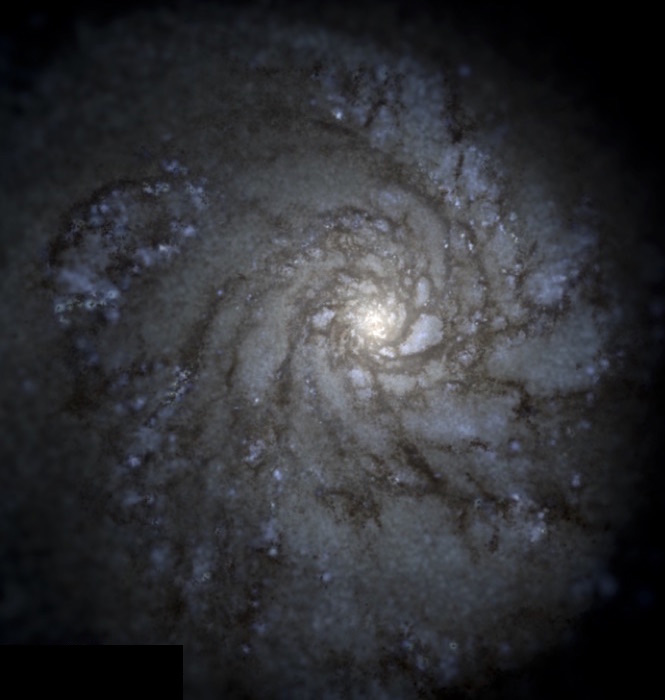The existence of dark matter has not exactly been under threat – the ratio of dark matter to ordinary matter in the universe is well established, at about 5:1 in favor of dark matter. Consistent results are found between observations of the cosmic microwave background, observations of clusters of galaxies, and observations of the rotation curves of galaxies. (The MOND theory as an alternative to dark matter does not do well at scales greater than that of individual galaxy rotation curves.)
But there has been an issue around galaxy formation. It has been expected that many more dwarf galaxies should be seen in our Local Group, which is dominated by the Andromeda Galaxy (#1) and our Milky Way Galaxy (#2, sorry folks), along with the aptly named Triangulum Galaxy (#3).
Where are the Dwarfs?
Our Milky Way has only around 30 dwarf galaxies as companions, the best known of which are the Large and Small Magellanic Clouds. While a few more have been discovered only recently, simulations of galaxy formation have previously suggested this number ought to be more than 1000! This posed a problem for both our understanding of dark matter and our understanding of galaxy formation.
Now, from CalTech comes a much more detailed simulation of how galaxies similar to the Milky Way are formed. The researchers used over 700,000 CPU hours of supercomputer time to create the most detailed simulation ever of the galaxy formation and evolution processes.
“In a galaxy, you have 100 billion stars, all pulling on each other, not to mention other components we don’t see like dark matter. To simulate this, we give a supercomputer equations describing those interactions and then let it crank through those equations repeatedly and see what comes out at the end.” – Caltech’s Phil Hopkins, associate professor of theoretical astrophysics.
Death by Supernova
Postdoc Andrew Wetzel and Prof. Hopkins paid special attention to the effects of supernovae. When supernovae explode they release tremendous amounts of kinetic energy. They generate powerful winds that reach speeds of over a thousand kilometers per second.
In a dwarf galaxy an individual supernova can have substantial effect. The researchers’ simulations indicate that dwarf galaxies can actually be destroyed by the effect of even a single supernova during their early history. Stars and gas that would form future stars can both be blown out of the dwarf galaxies. In addition, many dwarf galaxies in the Milky Way’s neighborhood would have been destroyed by the gravitational tidal forces of the Milky Way, the simulations show.
These advanced galaxy evolution simulations appear to solve the dark matter and dwarf galaxy problem. The authors plan to refine their results and develop even greater understanding of galaxy formation with simulations of even greater power in the future.

Simulated View of Milky Way Galaxy
The formation and evolution of the galaxy were done on a supercomputer. Credit: Hopkins Research Group/Caltech
References:
https://www.caltech.edu/news/recreating-our-galaxy-supercomputer-51995

